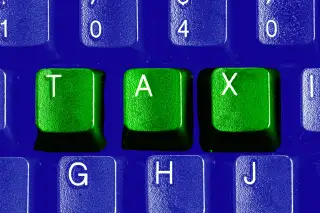How to Get Access to the IRS's New Free Tax Software

This tax season, the IRS is rolling out a new way for some Americans to file for free.
As of Tuesday, the agency’s free guided tax-filing software, called Direct File, is open to millions of taxpayers from a dozen states as part of a pilot test. A Spanish-language version is also available.
The IRS says that, during the test, the software will accept returns from people with simple tax situations, such as a parent with W-2 employment income who plans to claim the child tax credit or a retiree living off Social Security income.
The agency estimates that more than 18 million Americans are eligible to test Direct File during the pilot.
Here’s what you should know if you want to file your 2023 taxes for free using the IRS’s new software. (Note: This tool is different from IRS Free File, which is available to anyone who made under $79,000 last year and opened in January.)
Direct File eligibility
The biggest factor in determining your eligibility to join the IRS Direct File pilot test is location. During this phase, the IRS is only allowing taxpayers in the following 12 states to join:
- Arizona
- California
- Florida
- Massachusetts
- Nevada
- New Hampshire
- New York
- South Dakota
- Tennessee
- Texas
- Washington
- Wyoming
You should have lived and earned all of your 2023 income in your state to qualify. Of those 12 states, Florida, Nevada, New Hampshire, South Dakota, Tennessee, Texas and Wyoming do not have state income tax. For the remaining states, Direct File may prompt you to complete your state income taxes once you’re finished with your federal return.
Other key criteria include that your 2023 income must have come from the following sources:
- W-2 earnings from an employer
- 1099-G (unemployment benefits)
- SSA-1099 (Social Security benefits)
- and/or 1099-INT (interest of up to $1,500)
The IRS is imposing income restrictions for Direct File, as well. You won't be able to use Direct File if your wages exceed $200,000 (or $160,200 if you had more than one employer). For married taxpayers filing separately, your wages can't exceed $125,000, and total wages for joint filers can't exceed $250,000.
Freelancers or gig workers earning income from independent contractor work won’t be able to use the tool during the pilot phase, either.
The Direct File tool also does not currently accept itemized deductions — only the standard deduction, which is $13,850 for tax year 2023. Similarly, the tool only allows you to claim the child tax credit, the earned income tax credit and the tax credit for other dependents. People with more complex tax returns will have to find another way to file their tax returns, like through the IRS Free File program or a third-party tax prep software.
How to use Direct File
The Direct File site is not very clear on how to begin filing your taxes while the pilot test is open. To do so, select the “check my eligibility” button on the homepage (even if you’ve already verified that you’re eligible) and click through all the criteria.
At the end, the site will direct you to sign in using an ID.me account. ID.me is an identity verification service required for the IRS Direct File pilot test.
Signing up for ID.me requires your name, email, Social Security number, government-issued ID as well as a smartphone with a camera or a computer with a webcam. ID.me will need to verify that your face matches your ID. You can choose to do this via facial recognition software or video chat with a representative. Once your ID.me account is ready to go, you must go back to the IRS Direct File site and log on through ID.me.
Once you’re officially signed in, follow the guided prompts to file your federal tax return while referencing your W-2 and 1099s, if any. If you’ve ever filed using other guided tax prep software like TurboTax or H&R Block, then Direct File should feel intuitive, as the IRS's software also asks simple step-by-step questions and gives you references to where you can find various data points on your documents.
When you're finished, the IRS will estimate the amount of your tax refund — or how much you owe — and give you a chance to review your information before submitting. If you're receiving a refund, you can select whether you want it direct deposited or sent by check through the mail.
This year, the IRS also updated its “Where’s My Refund?” tool to make tracking your tax refund easier. If you chose direct deposit, your refund should hit your bank account within about three weeks.
More from Money:
Tax Changes 2024: What's New for Filing Taxes With the IRS This Year?